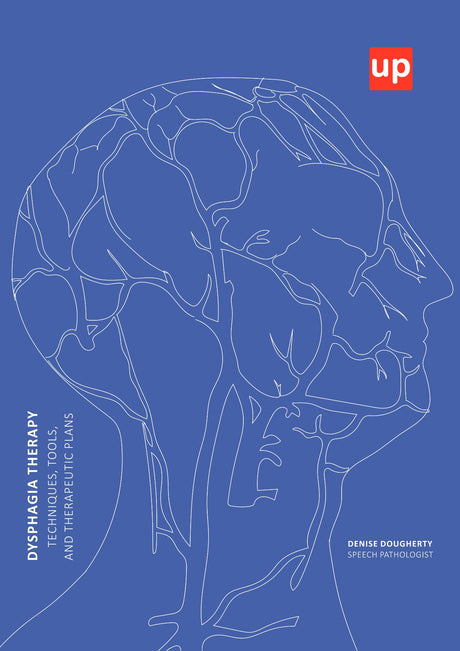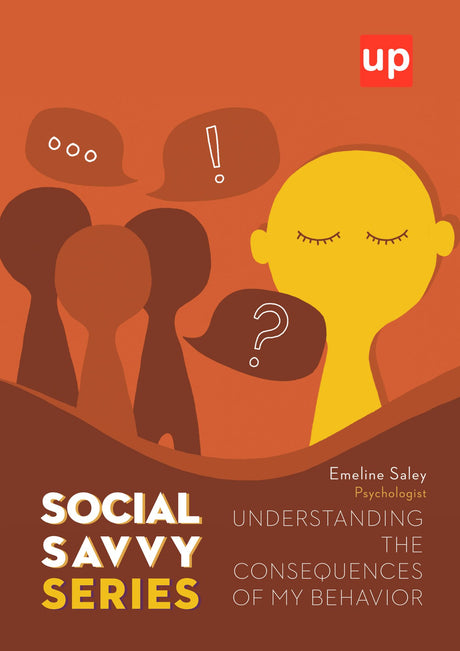Attention Deficit Hyperactivity Disorder (ADHD) is a neurodevelopmental disorder that affects both children and adults. It is characterised by persistent patterns of inattention, impulsivity and hyperactivity and affects millions of people worldwide. However, it is important to note that ADHD does not present uniformly in all individuals. There can be considerable variation and gender plays an important role in how symptoms manifest. This post explores the differences in ADHD symptoms between boys and girls.
Understanding ADHD
ADHD is a complex disorder that affects various aspects of a person's life, including academic performance, professional success and interpersonal relationships. ADHD is usually categorised into three types: Predominantly inattention, Predominantly hyperactivity-impulsivity, and combined type. Each presents a unique set of symptoms, with some overlap.
General differences in the presentation of ADHD symptoms
 The symptoms of ADHD can vary considerably between individuals. Factors such as age, personality and environmental influences can affect the way these symptoms present themselves. In addition, research shows that gender can have a significant impact on the manifestation of ADHD symptoms, leading to different experiences for boys and girls.
The symptoms of ADHD can vary considerably between individuals. Factors such as age, personality and environmental influences can affect the way these symptoms present themselves. In addition, research shows that gender can have a significant impact on the manifestation of ADHD symptoms, leading to different experiences for boys and girls.
ADHD symptoms in boys
Boys are often stereotypically associated with ADHD, mainly due to their tendency to have more prominent symptoms. They are more likely to be diagnosed with the predominantly hyperactive-impulsive or combined type of ADHD. Symptoms commonly seen in boys include:
Anxiety and hyperactivity: Boys often exhibit physical signs of hyperactivity, such as running, fidgeting or having trouble sitting still.
Impulsivity: Boys with ADHD may act without thinking, leading to impulsive behaviors such as interrupting others, having difficulty waiting their turn, and acting out.
Difficulty concentrating: Although less recognized, boys may also struggle with inattention. They may find it difficult to stay on task, easily lose track of things and appear forgetful.
Social expectations and biases can affect the recognition and diagnosis of ADHD in boys. Boys are often expected to be energetic and active, which can cause hyperactive and impulsive symptoms to be overlooked or dismissed as typical "boyish behavior."
ADHD symptoms in girls
 ADHD in girls often goes unrecognised because their symptoms tend to be less obvious than those of boys. Girls are more likely to be diagnosed with the predominantly inattentive type of ADHD. Their symptoms often include:
ADHD in girls often goes unrecognised because their symptoms tend to be less obvious than those of boys. Girls are more likely to be diagnosed with the predominantly inattentive type of ADHD. Their symptoms often include:
Inattention: Girls with ADHD often have difficulty concentrating, but this can be mistaken for daydreaming or lack of interest.
Disorganization: girls may struggle with organization, often misplacing items or having difficulty keeping track of tasks.
Difficulty with self-regulation: Emotional dysfunction, including intense emotional reactions or mood swings, may be a symptom of ADHD in girls.
Social biases may also affect the recognition of ADHD in girls. Girls are often expected to be calm, quiet and attentive, which can lead to overlooking ADHD symptoms or confusing them with other issues such as anxiety or mood disorders.
Effect of gender differences on diagnosis
Differences in symptom presentation between boys and girls can significantly affect the diagnosis of ADHD. Boys are more likely to be diagnosed because of their more prominent hyperactive and impulsive symptoms. Girls, on the other hand, are often underdiagnosed or diagnosed later due to their less obvious, mostly inattentive symptoms. This delay or non-diagnosis can lead to prolonged struggles in school, lower self-esteem and an increased risk of a co-existing mental health condition.
Importance of understanding the differences
Understanding these gender differences in the presentation of ADHD symptoms is critical for parents , teachers and health professionals. It can guide them in the early identification of potential signs of ADHD, leading to earlier diagnosis and intervention. This early identification is crucial as it opens the door to effective treatments and strategies to manage symptoms and improve overall quality of life. In addition, it can help mitigate some of the potential negative effects of ADHD, such as academic struggles and low self-esteem.
Tips for parents and teachers
Recognising the symptoms of ADHD can be challenging, especially given the differences in the way they present in boys and girls. Here are some strategies to help you recognise these symptoms:
Be observant: Observe your child or student's behavior regularly. Look for consistent patterns of inattention, hyperactivity or impulsivity that seem to be out of the norm for their age and development.
Listen and communicate: Regular communication with your child or student can give you insight into their experiences. Listen to their struggles and concerns and encourage open conversations about their feelings and experiences.
Seek professional help: if you suspect your child or student may have ADHD, consult a health professional. He or she can provide a thorough evaluation and guide you toward next steps.
Support your opinion: Support your child or student's needs. If you notice ongoing difficulties that may be related to attention deficit disorder, speak up and seek support from health professionals or school resources.
Upbility is trying to provide accurate and updated information about Attention Deficit Hyperactivity Disorder (ADHD) not only for clinicians and therapists but also for parents. It has a rich library with digital resources that can guide you on the journey to the intervention, management, and treatment of this disorder. You can find a wide range of tools, worksheets, and exercises to help children with ADHD develop the appropriate skills.
Existing conditions
 ADHD rarely occurs in isolation. It is common for children with ADHD to have one or more co-existing conditions. Some of these include:
ADHD rarely occurs in isolation. It is common for children with ADHD to have one or more co-existing conditions. Some of these include:
Learning disorders
Dyslexia: This learning disorder mainly affects reading. Children with dyslexia may have difficulty with word recognition, spelling and text comprehension. This disorder, combined with attention deficit disorder, can create significant challenges in the academic environment.
Dyscalculia: This condition involves difficulty understanding numbers and mathematical facts. Children with dysarithmia may have difficulty with solving math problems, understanding mathematical symbols, or following sequences.
Mood disorders
Depression: symptoms of depression in children may include persistent feelings of sadness, loss of interest in activities they once enjoyed, changes in appetite or sleep, and difficulty concentrating. ADHD and depression can co-exist and some symptoms, such as difficulty concentrating or feeling anxious, may overlap, making diagnosis more complicated.
Anxiety: children with anxiety may experience excessive worry, restlessness and difficulty concentrating - symptoms that also occur with attention deficit disorder. A child may have both conditions, or symptoms of anxiety may be mistaken for ADHD and vice versa.
Behavioural disorders
Oppositional Defiant Disorder (ODD): this disorder is characterised by a pattern of angry or irritable mood, argumentative/challenging behaviour or revengefulness. Children with ODD may argue with adults, defy or refuse to obey rules, deliberately annoy others, or blame others for their mistakes. ADHD and ODD often co-exist and managing both can be difficult, but is possible with the right strategies.
Conduct disorder (CD): this is a more severe behavioral disorder that involves a pattern of violating the basic rights of others or social norms. Children with Conduct Disorder may exhibit aggressive behavior, deceitfulness, and destruction of property.
Treatment options
Medication: Stimulant and non-stimulant medications can be used to manage ADHD symptoms.
Behavioural therapy: This can help children develop positive behaviors and manage their symptoms.
Psychoeducation: Educating a child about attention deficit disorder can help them understand their behaviors and feelings.
Support at school: Implementing individualized education programs (IEPs) or 504 plans can help support educational needs.
The role of a balanced lifestyle
Nutrition: A balanced and nutritious diet can play an important role in managing ADHD symptoms. Although there is no specific 'ADHD diet' that has been universally recommended, certain dietary choices can contribute to overall brain health and improve symptoms:
Protein rich foods: Protein, found in foods such as lean meats, eggs, beans and nuts, can help with alertness and concentration.
Complex carbohydrates: Foods such as whole grains, fruits, vegetables and legumes are a good source of complex carbohydrates that provide stable energy and stabilize blood sugar levels.
Omega-3 fatty acids: Found in fish such as salmon and tuna, as well as flaxseeds and walnuts, omega-3 fatty acids are important for brain health.
Exercise
Regular physical activity can have a positive impact on ADHD symptoms. Exercise can boost dopamine, norepinephrine and serotonin levels in the brain, which play a key role in focus and attention. Both structured physical activities, such as team sports or martial arts, and unstructured activities, such as playing in a park, can be beneficial.
Sleep
Sleep is vital for everyone, but especially for people with attention deficit disorder. Lack of sleep can exacerbate ADHD symptoms such as inattention, hyperactivity and impulsivity. Good sleep hygiene practices for children with ADHD may include maintaining a consistent sleep schedule, creating a quiet and comfortable sleep environment, and establishing a relaxing bedtime routine.
Mindfulness and relaxation techniques
Practices such as mindfulness meditation, yoga and deep breathing exercises can help reduce stress and anxiety, improve concentration and promote overall well-being. These techniques can be particularly beneficial for people with ADHD, helping them to develop greater self-awareness and self-regulation skills.
Limit screen time
Excessive screen time can affect both sleep and physical activity, so it's important to manage and limit the amount of time you spend on electronic devices. Encourage other activities such as outdoor play, reading and creative hobbies.
A balanced lifestyle that incorporates these elements can go a long way in managing ADHD symptoms and promoting overall wellness. However, lifestyle modifications should complement rather than replace traditional ADHD treatments such as medication or behavioural therapy. It is always best to discuss any lifestyle changes with a healthcare professional.
Understanding the differences in ADHD symptom presentation between boys and girls is crucial for early identification and intervention. While boys are often associated with attention deficit disorder due to their more obvious symptoms, it is important to remember that girls can and do have ADHD, although they often present with less obvious symptoms. Early recognition and understanding can lead to early interventions, improving the overall quality of life for children with ADHD.
Remember that ADHD does not define your child or student. They are not their diagnosis, but rather unique individuals with their own strengths and capabilities. With knowledge, understanding and appropriate support, they can successfully navigate their journey with attention deficit disorder.
Original content from the Upbility writing team. This article, in whole or in part, may not be republished without attribution to the publisher.












